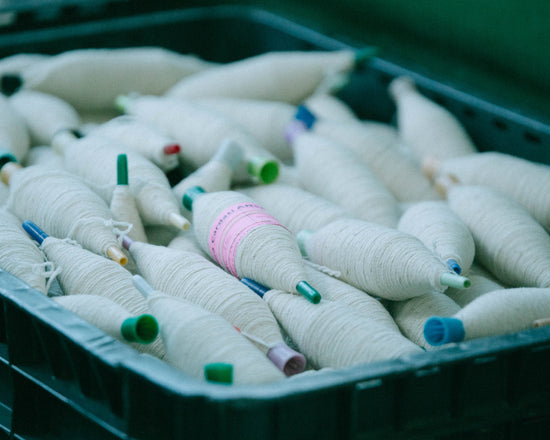RECYCLED CASHMERE
WHERE DOES CASHMERE COME FROM?
It is a material renowned for its softness and warmth. It is made from the undercoat of cashmere goats, primarily originating from the Kashmir region, located between India and China.
Each spring, the goats are combed to collect their precious undercoat. It is then hand-sorted to separate the finest and softest fibers, which are unique for the production of cashmere.
RECYCLED FIBERS
At Tricot, we have chosen recycled cashmere, a decision that is at the heart of our concerns. Our sweaters are made of 65% recycled cashmere and 35% virgin fibers.
Recycled cashmere at Tricot comes from two main sources in Italy: surplus production of knitters (pre-consumer) and recycled cashmere garments (post-consumer)
All our sweaters are assembled and knitted in Italy, near Venice, in a factory that guarantees traditional craftsmanship and the passion of its artisans.
PRE-CONSUMER
Pre-consumer refers to cashmere yarn from dead stocks or surplus production, never used. These surplus materials come from manufacturers or knitting workshops. At Tricot, we use these cashmere yarns to make our products.
POST-CONSUMER
Post-consumer refers to cashmere yarns that come from previously used garments. Once collected, these garments are disassembled to separate and select the best cashmere fibers.
This process involves untangling the threads and removing unwanted materials. The recovered fibers are sorted by quality and strength, only the finest and strongest are kept.
Recycled fibers are also sorted by color to avoid additional dyes.
This reduces textile waste and extends the life of garments. By using these recycled fibres, we maintain the warmth, softness and comfort of cashmere while adopting a sustainable and ecological approach.

❆ GRS (GLOBAL RECYCLED STANDARD) CERTIFIED
GRS is an international certification that establishes the criteria for validation of a recycled product, the chain of custody, social and environmental practices and restrictions on chemical composition.
TECHNIQUE
GRS labeled products must contain at least 50% recycled content. Material recycling refers to when a recovered material is transformed into a recycled material.
ENVIRONMENT
Establishment of an environmental issues management system including a manual, a manager, updates of local requirements, monitoring of indicators, an annual action plan and staff training procedures.
SOCIAL
Each certified person must define and implement clear policies to meet the social requirements of GRS certification.
This includes designating compliance officers, training staff, and committing to prohibiting forced and child labor, while protecting workers' rights and safety.
HEALTH REQUIREMENTS
The establishment of a chemical management system must include a list of chemical inputs, use authorization documentation, a hazard assessment process, and an up-to-date safety data sheet for each substance used in GRS certified products.




